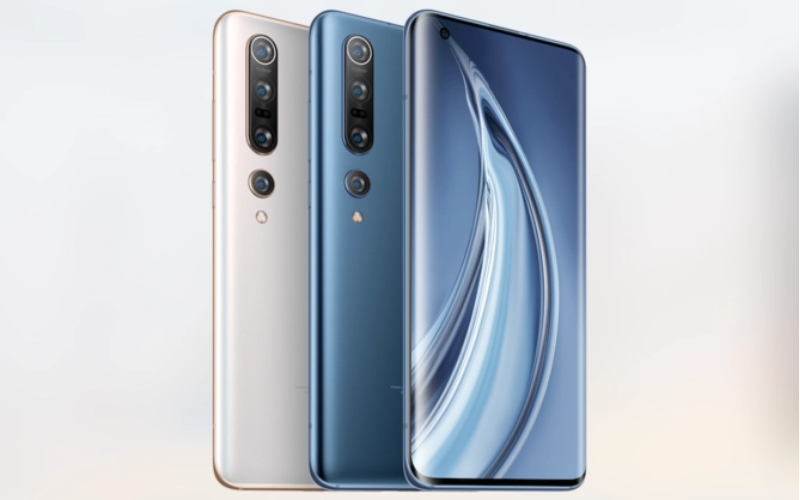Xiaomi 10 Pro - Screen Quality Report
The Xiaomi 10 Pro, by far the best screen in Xiaomi's history, has an FHD+ resolution of 2340 by 1080, and a 90Hz refresh rate, as well as support for on-screen calibration and so-called color management.
Color mode and gamut coverage:
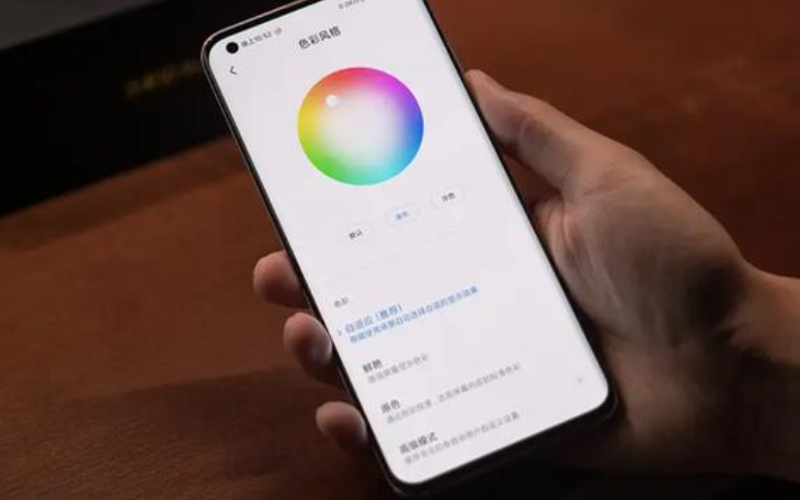
Xiaomi 10 Pro gives quite a variety of color modes, first we can find four color modes in the Settings, respectively, adaptive, bright, primary color and advanced Settings.
In the advanced Settings, there are four modes: bright, primary, P3 gamut, sRGB gamut, each mode can choose further adjustment options, which is very friendly for professional users, you can solve some gamma inaccuracy or RGB imbalance problems through it.
In addition to the P3 and sRGB modes that directly indicate the color space, the maximum color of the bright mode, adaptive mode and primary color mode of the Mi 10Pro correspond to the limit color of the screen, P3 and sRGB color space respectively.
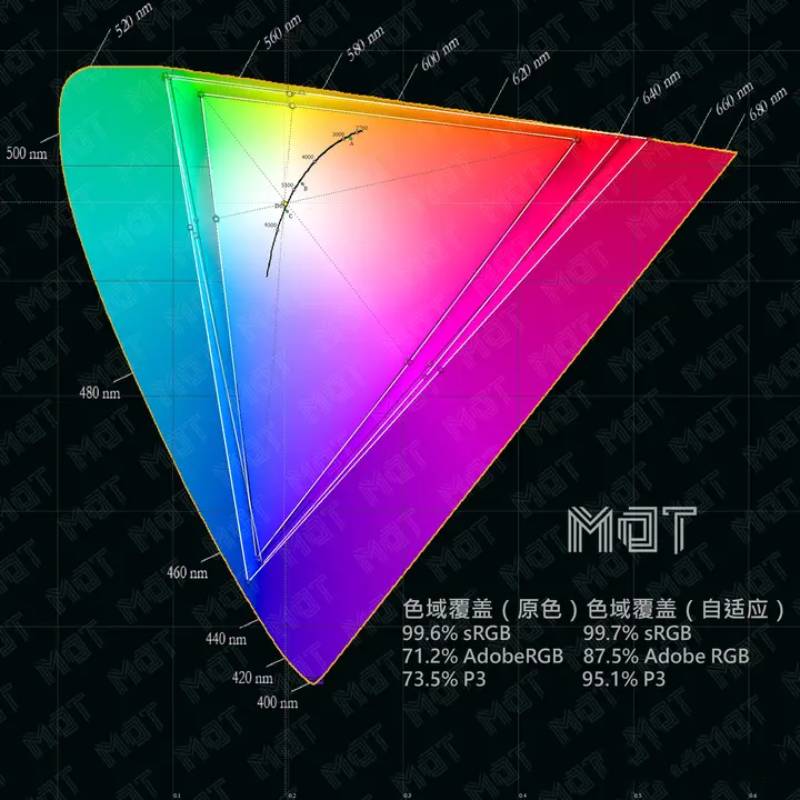
Primary /sRGB mode can cover: 99.6% sRGB (the closer to 100% the better)
Adaptive /P3 mode can cover: 95.1% P3 (the closer to 100% the better)
As can be seen from the above diagram, the coverage is still very accurate for sRGB, except for some deviations in blue, the limit coverage of red and green is very good, but the performance of adaptive mode is slightly worse, mainly because red is somewhat insufficient, green is somewhat exceeded, and blue is slightly deviated.
If you switch to the "blind" bright mode, then you will achieve:
100% sRGB color gamut coverage; 172.4% sRGB color gamut volume
93.5% Adobe RGB color gamut coverage; 118.8% Adobe RGB color gamut volume
100% P3 color gamut coverage; 122.1% P3 color gamut volume
However, this mode is still too blind and does not meet any content standards, so it is not recommended.
In terms of color management:
Only the adaptive and primary color modes can switch the color gamut according to the displayed content, but after our test, this only automatically recognizes the color profile embedded in the image in the official album App, and can not be recognized when the third-party App is opened, but instead uses sRGB, which cannot be called a true global color management. Instead, manually whitelist color space switch.
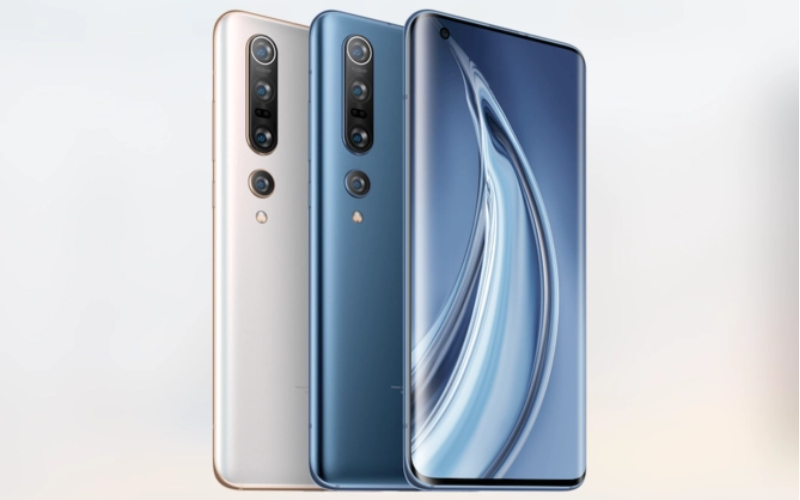
In addition, if we switch the color mode to primary color or sRGB mode, it is obvious that the system UI of MIUI 11 is compressed directly from the P3 color gamut to sRGB, so it looks very gray and under-saturated, which is obviously because the color management was not considered in the development process.
Therefore, it is recommended that we give priority to the adaptive mode, and then switch to the primary color /sRGB when you need to retouch the image to ensure the accuracy of sharing.
Spectrum:
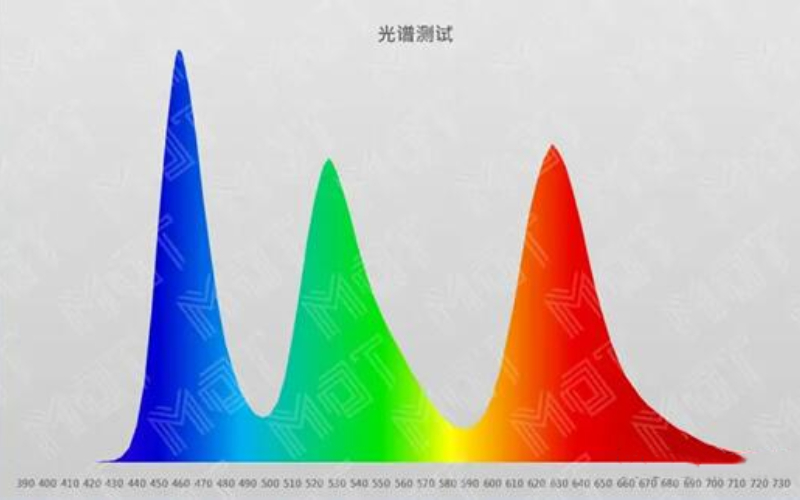
In terms of spectrum, due to the characteristics of OLED, the blue wave peak of Xiaomi 10 Pro is about 460nm, it can be said that it avoids the blue wavelength region of 415-455nm that stimulates the human eye larger, there is no need to worry about greater damage to the human eye, and the RGB three-color crest is also more pure, which is also the advantage of OLED. More vivid colors can be easily achieved compared to LCD.
White accuracy test:
In terms of white points, after testing, the default color temperature of the XiaoXiaomi 10 Pro in adaptive/bright mode is 7340K, which will be colder than the standard 6500K of sRGB, but this is also more in line with the practice of Chinese people, most people will feel yellow when they see the standard color temperature of 6500K.
At the same time, the Xiaomi 10 Pro also provides the option to switch the color temperature, in the adaptive/bright mode, the color temperature is 6659K in the warmest case (orange dot above), and the color temperature is 8009K in the coldest case (blue dot below).
In the primary color mode, the default color temperature is 6431K, which is closer to the standard 6500K, the warmest temperature can be adjusted to 5893K, and the coldest is 6837K. are the black/orange/blue squares in the following figure respectively. It can be found that the default color temperature can be adjusted in the primary color mode is limited, but you can also continue to adjust it manually.
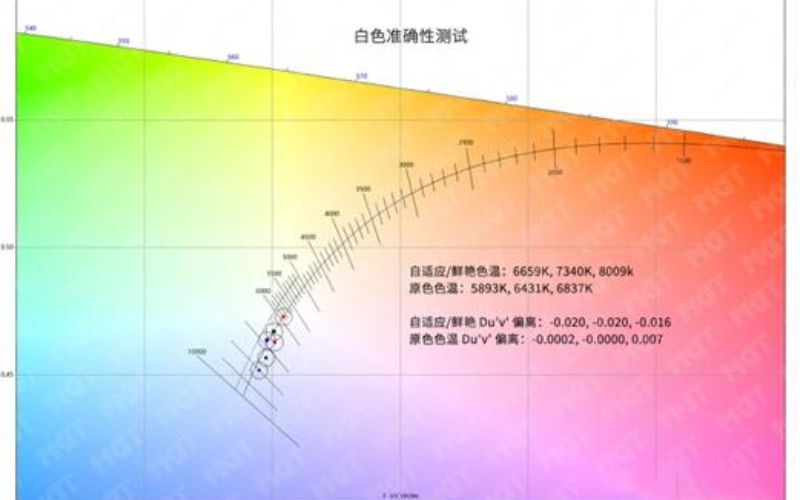
Compared with the ordinary screen test that only measures color temperature, MDT adds Du 'v' deviation to the screen white spot accuracy test, because the traditional color temperature test can only reflect the cold and warm of a screen, not including green or purple, and a screen that is obviously green can also be 6500K standard color temperature. Du 'v 'deviation can reflect whether the screen has color bias that cannot be measured by color temperature alone.
The Xiaomi 10 Pro 's Du 'v 'deviation, as shown in the figure above, is below the detectable level of -/+ 0.003, so even in comparison with the standard screen, it is difficult to find that it has a green/purple bias, especially in the primary color mode, the deviation is smaller, the performance is very good, it not only shows the correct white by default, When switching the color temperature, it will not appear purple or green.
But as mentioned above, it is a pity that although the Millet 10 Pro provides quite a lot of customization options in the advanced mode, only one primary color mode can achieve automatic switching, but only the library App, and the other interface default is relatively dim sRGB, the color is not clever.
Gamma test:
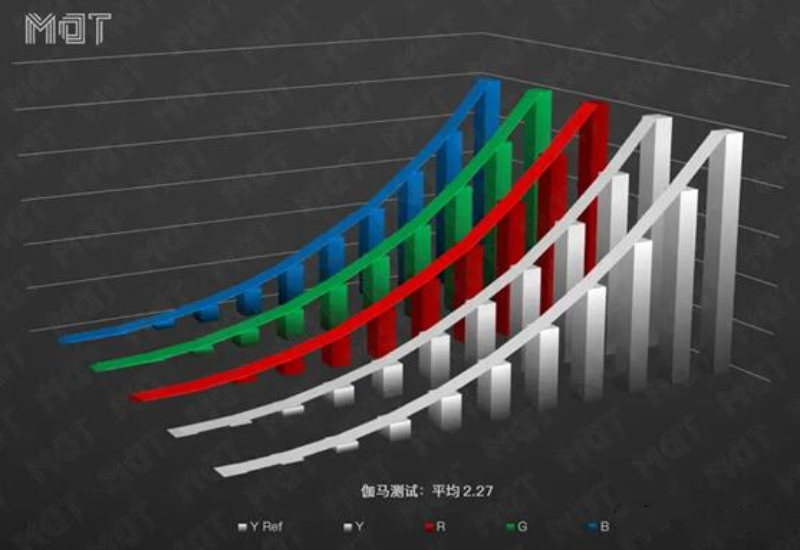
Gamma separately tested several color modes, the first is the primary color mode: the RGB of the Xiaomi 10 Pro is very accurate and balanced, which should also prove that its white accuracy is very good, and its average gamma is 2.27, exceeding the 2.2 standard, which means that its contrast looks higher, the picture looks deeper and darker.
In the adaptive mode, the gamma tendency is somewhat different from the primary color mode, and the gamma becomes relatively lower, at 2.18 close to the 2.2 standard, which is good. The three-color intensity of RGB is significantly stronger for blue, which is also caused by the cold color temperature in adaptive mode.
Color test:
The color performance of the Xiaomi 10 Pro in adaptive and primary color modes was tested respectively:
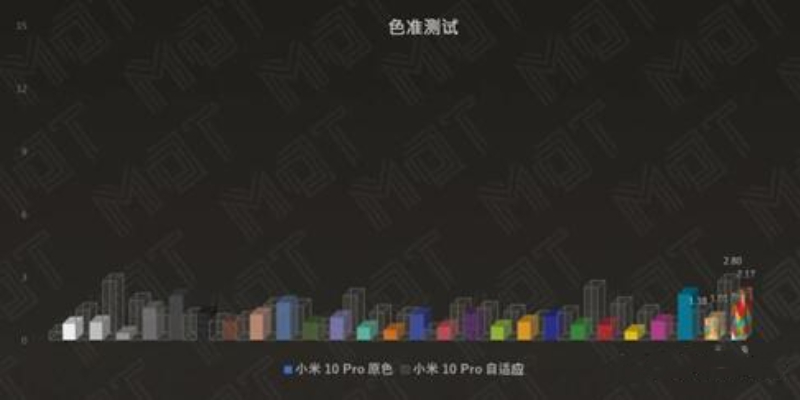
The average ΔE is 1.01
The maximum color ΔE is 2.17
The restoration of sRGB color gamut in primary color mode is very accurate, reaching the standard of ΔE 1.1 claimed by Xiaomi at the press conference, but we can also find that its color deviation is not high, mainly the gray scale part has some problems.
Adaptive mode:
The average ΔE is 1.38
The maximum color ΔE is 2.80
The average ΔE has increased slightly, and there are also some problems with the gray scale, and the red coverage is not so accurate, which is not unrelated to the color gamut coverage seen before, because the primary color mode does not cover red very accurately, causing the red gap.
MDT also introduces an exclusive simulation display based on test results:
The left side of the figure above shows the color under standard sRGB, the middle is what the simulated device under test (Xiaomi 10 Pro primary color mode) looks like when displaying the picture, and the right side is the deviation between the color that the device under test displays this picture and the color that should be displayed, and green represents that the machine can‘t distinguish the difference. Yellow means that when compared with a standard color-calibrated display, you can carefully see the difference, and orange means that there is a clear difference.
Xiaomi 10 Pro this piece of the screen color performance is still very good, the color diagram is all green, mainly the gray scale of the dark part ΔE is shown as yellow, once again confirmed the previous test results, Xiaomi 10 Pro in the gray range has some red purple and bright, but the gap is not too big. You can't tell if you don't compare it.
Therefore, the test results of Xiaomi 10 Pro using adaptive mode are added. When comparing with the standard P3 mode wide-color gamut picture, the ΔE diagram on the far right is mostly green, but the shadow part behind the yellow petals and the parts of other scenes also have ΔE exceeding 1.5. In line with the results of the previous chromatism gamma test, but the ΔE did not exceed the standard of 2, so it can only be seen when carefully compared.
Overall, the color performance of this piece of the Xiaomi 10 Pro screen can be said to be a first-line level, whether it is in the face of sRGB content or P3 content, there is a good color performance, ordinary users can not see the difference, but at least in the MDT test sample, Not as good as the iPhone and other top friends.
Brightness test:
In terms of brightness, the Xiaomi 10 Pro can maintain a long-term brightness of 445 cd/m² under manual brightness, and can stimulate a brightness of 675 cd/m² under automatic mode. The maximum brightness is 648 cd/m² for full screen playback of HDR content and 870 cd/m² for 10% window testing.
Reflectivity test:
Xiaomi 10 Pro this piece of curved screen does not come with the appearance of the film, so in the reflectivity test has more advantages, can reach the level of 9.6%, relative to most of the products with the film performance is better, as for if you want to own the film, then the reflectivity is very affected by the film.
Then came the stroboscopic test:
First of all, according to the MDT convention, the first step is to test the stroboscope at 100 cd/m² brightness to simulate the daily indoor use environment. The Xiaomi 10 Pro does not have obvious stroboscopic when the brightness is above 90cd/m², which is already relatively low. At 100 cd/m², the measured frequency is 90.3Hz, the fluctuation depth is 9.1%, and the flicker index is 0.009, so the naked eye can’t see the frequency flash, and if you shake your finger in front of the screen, you can’t see the double shadow.
The Xiaomi 10 Pro brightness will be further reduced, you will find obvious stroboscopic appearance, but the Xiaomi 10 Pro also provides built-in stroboscopic protection function, so choose half of the frequency shining degree, that is, about 45 cd/m² for stroboscopic protection comparison test, the results are shown in the figure above.
When the stroboscopic protection is not turned on, the stroboscopic depth of the Xiaomi 10 Pro is 361Hz 88.5%, and the most important flicker index is 0.299;
When strobe protection is turned on, the stroboscopic performance of the Xiaomi 10 Pro is 90Hz, the fluctuation depth is 27.5%, and the most important flicker index is 0.027
Not only data or graphics, can find that the millet 10 Pro stroboscopic protection function will bring significant stroboscopic improvement, but this time millet for the depth of fluctuation is not much, the usual anti-stroboscopic mode of other products can achieve a fluctuation depth of less than 15%, but also reduce more low flicker index. However, even if the anti-stroboscopic function is turned on, the Xiaomi 10 Pro has a fluctuation depth of 27.5%, which may need attention.
And finally, the resolution:
The Xiaomi 10 Pro has a 6.67 inch 2340*1080P screen, which is 386.39 PPI according to standard RGB calculation, and we all know that the Xiaomi 10 Pro uses OLED from Samsung. Therefore, according to the Pentile arrangement, the conversion will be 315.48 PPI, which is slightly lower than the 320 PPI TV network boundary defined in the year.
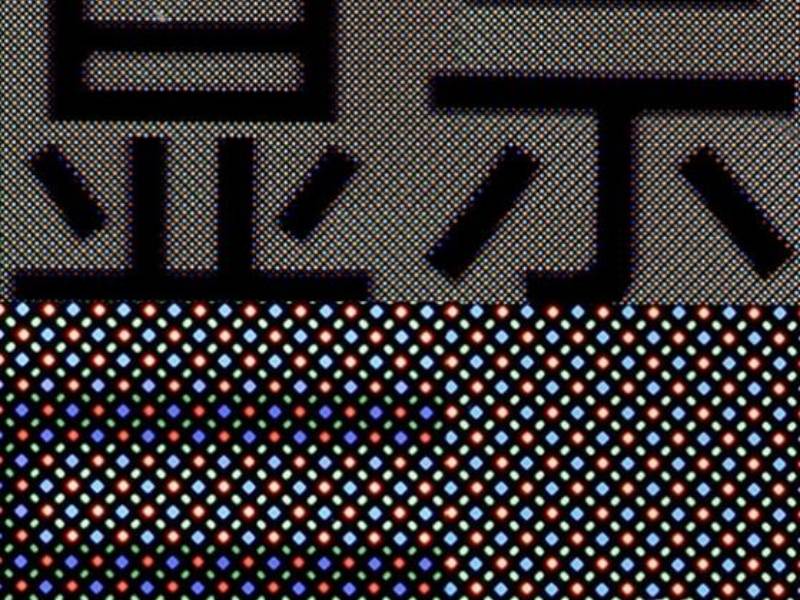
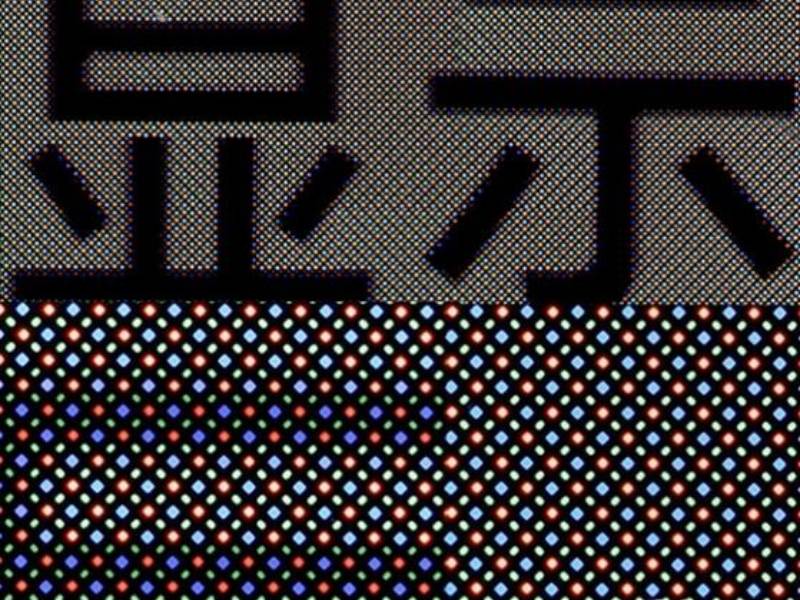
2340 *1080 resolution, considering the conversion to 315 PPI, daily will not feel what big fruit
90Hz refresh rate compared to 60Hz can bring a significant improvement, whether it is daily sliding or gaming have a smoother feeling. Achieved relatively accurate sRGB color gamut coverage, but the P3 color gamut is slightly worse, and can‘t achieve the advertised "automatic color management".
The brightness performance was good, the excitation brightness under sunlight stimulation was 675 cd/m², and the brightness of the 10% window playing HDR content reached 870 cd/m². The average ΔE does not exceed 1.5, with a very good performance of color accuracy, the human eye can hardly see the difference.
But the problem of color management is still not solved, even in the system interface did not take into account the problem of color mode switching, and the DC anti-stroboscopic mode fluctuation depth is still very high, which may be the biggest problems we found on the Xiaomi 10 Pro. For the best experience, MDT recommends manually selecting a warm color temperature to use in adaptive mode.
In general, the screen of Xiaomi 10 Pro has basically reached the performance of the press conference, and has a relatively high foundation in hardware, which can reach the forefront of the current smartphone screen performance. Without considering color management, you can see enough bright and accurate colors, high brightness can also support sunlight reading and display good HDR effect, which is the best screen in the history of Xiaomi mobile phone.

